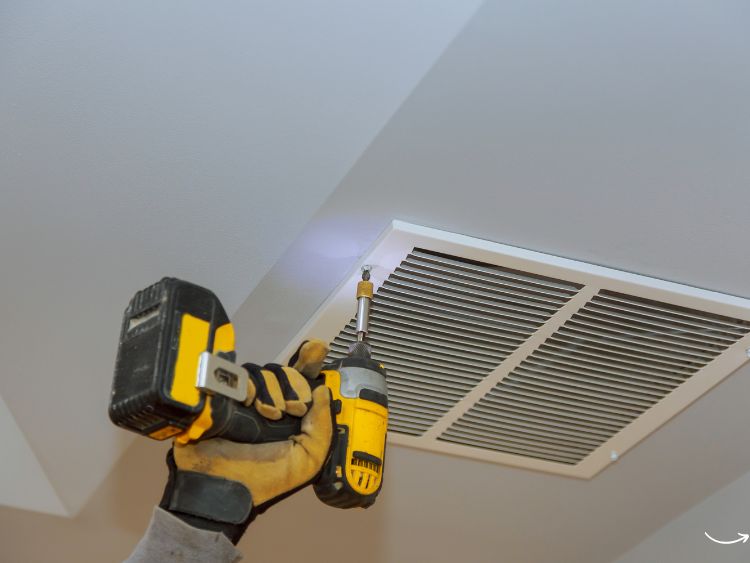Ever wondered why your basement feels damp and musty? Well, you’re not alone! Many homeowners face this issue, and it often boils down to poor ventilation. A basement ventilation system can be the game-changer you need to keep your space fresh and dry. In this guide, we’ll dive into the nuts and bolts of basement ventilation systems, why they’re essential, and how to choose the right one for your home. So, let’s get started!
Why You Need a Basement Ventilation System
A basement ventilation system isn’t just a luxury; it’s a necessity. Here are a few reasons why:
1. Preventing Mold and Mildew
Basements are prone to high humidity, which can lead to mold and mildew growth. A good ventilation system helps control moisture levels, preventing these harmful fungi from taking root.
2. Improving Air Quality
Stagnant air in basements can harbor allergens and pollutants. Ventilation systems circulate fresh air, improving overall indoor air quality.
3. Protecting Your Home’s Structure
Excess moisture can weaken your home’s foundation over time. Proper ventilation keeps humidity in check, protecting your investment.
4. Enhancing Comfort
A well-ventilated basement is more comfortable, making it a more usable space for living, working, or storage.
Types of Basement Ventilation Systems
Choosing the right basement ventilation system depends on your specific needs and the conditions in your basement. Let’s explore the main types:
1. Natural Ventilation
This method relies on natural airflow through windows and vents. It’s the simplest and most cost-effective option but may not be sufficient for all basements.
2. Mechanical Ventilation
Mechanical systems use fans and ducts to circulate air. They are more effective than natural ventilation, especially in basements with limited airflow.
a. Exhaust Fans
Exhaust fans remove stale air from the basement and expel it outside. They are typically installed in walls or ceilings.
b. Supply Fans
Supply fans draw fresh air into the basement from outside, improving circulation and air quality.
c. Balanced Ventilation
This system uses both supply and exhaust fans to maintain a balanced airflow. It’s ideal for controlling humidity and improving air quality.
3. Dehumidifiers
While not a ventilation system per se, dehumidifiers play a crucial role in controlling basement humidity. They can be used in conjunction with other ventilation methods for optimal results.
How to Choose the Right Basement Ventilation System
Picking the right system can feel overwhelming, but these tips can help you make an informed decision:
1. Assess Your Basement’s Needs
Consider factors like the size of your basement, existing ventilation, and humidity levels. This will help you determine the type and capacity of the system you need.
2. Budget
Your budget plays a significant role in your choice. Natural ventilation is cost-effective, while mechanical systems and dehumidifiers may require a higher investment.
3. Installation
Some systems are easy to install as a DIY project, while others might need professional installation. Factor in the installation cost and complexity when making your decision.
4. Maintenance
Regular maintenance is crucial for keeping your ventilation system effective. Consider how easy it is to maintain the system you choose.
Benefits of a Properly Ventilated Basement
Investing in a basement ventilation system offers numerous benefits:
1. Healthier Living Environment
Proper ventilation reduces the risk of respiratory issues caused by mold, mildew, and poor air quality.
2. Extended Home Lifespan
By preventing moisture damage, you’re protecting your home’s foundation and structure, extending its lifespan.
3. Increased Property Value
A dry, well-ventilated basement can add value to your home, making it more attractive to potential buyers.
4. Enhanced Comfort and Usability
A fresh and dry basement is more comfortable and usable for various purposes, from storage to living space.
Installing a Basement Ventilation System
Installing a basement ventilation system might seem daunting, but with the right steps, it can be straightforward. Here’s a step-by-step guide:
1. Planning
Start by assessing your basement and deciding on the type of system you need. Measure the space and identify the best locations for vents and fans.
2. Gathering Materials
Purchase the necessary materials and tools. This might include fans, ducts, vents, and mounting hardware.
3. Installation
Follow the manufacturer’s instructions for installing your chosen system. Ensure all components are securely mounted and properly connected.
4. Testing
After installation, test the system to ensure it’s working correctly. Check for any leaks or issues and make adjustments as needed.
5. Regular Maintenance
Keep your system in top shape with regular maintenance. Clean or replace filters, check for blockages, and ensure all components are functioning correctly.
FAQs About Basement Ventilation Systems
1. How often should I run my basement ventilation system?
It depends on your basement’s conditions. In humid climates, running the system continuously or at least daily during the damp seasons is beneficial.
2. Can I use a dehumidifier alone for basement ventilation?
A dehumidifier can help control humidity but doesn’t replace the need for proper ventilation. Combining it with a mechanical ventilation system is often the best approach.
3. Are there any energy-efficient options for basement ventilation?
Yes, look for Energy Star-rated ventilation systems. They use less energy and can help reduce your utility bills.
4. What if my basement has no windows?
Mechanical ventilation systems are ideal for basements without windows. They can effectively circulate air and control humidity.
5. How do I know if my basement needs better ventilation?
Signs of poor ventilation include musty odors, visible mold, dampness, and condensation on walls or floors. If you notice these signs, it’s time to improve your basement’s ventilation.
Conclusion
A basement ventilation system is a crucial investment for any homeowner. It keeps your basement dry, improves air quality, and protects your home’s structure. By choosing the right system and maintaining it properly, you can enjoy a healthier, more comfortable living environment. Don’t let your basement be a damp, musty space—take action today and breathe easy!







